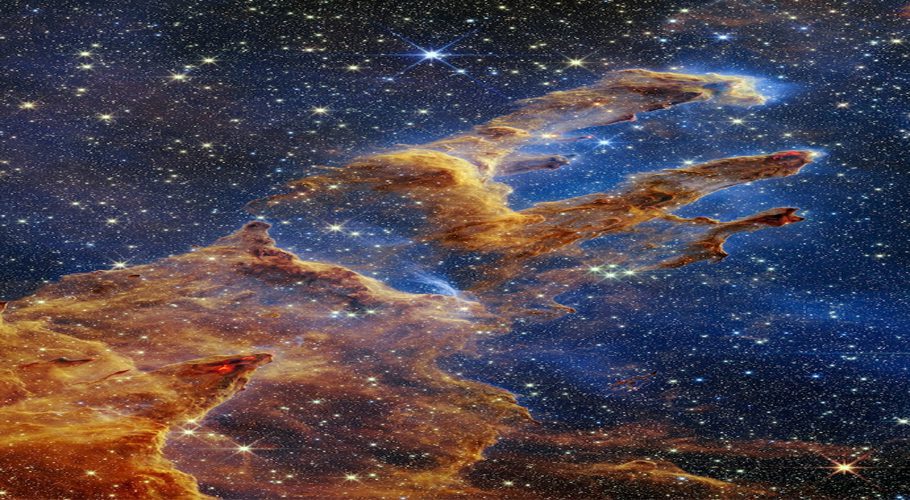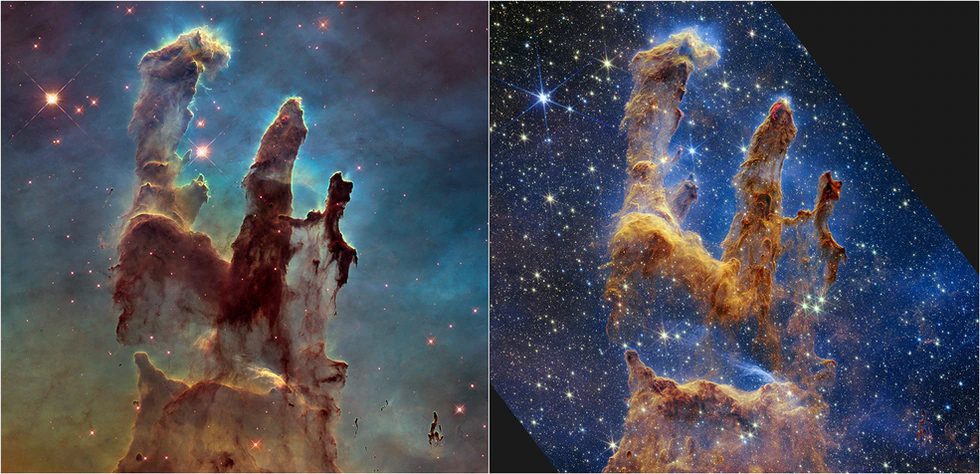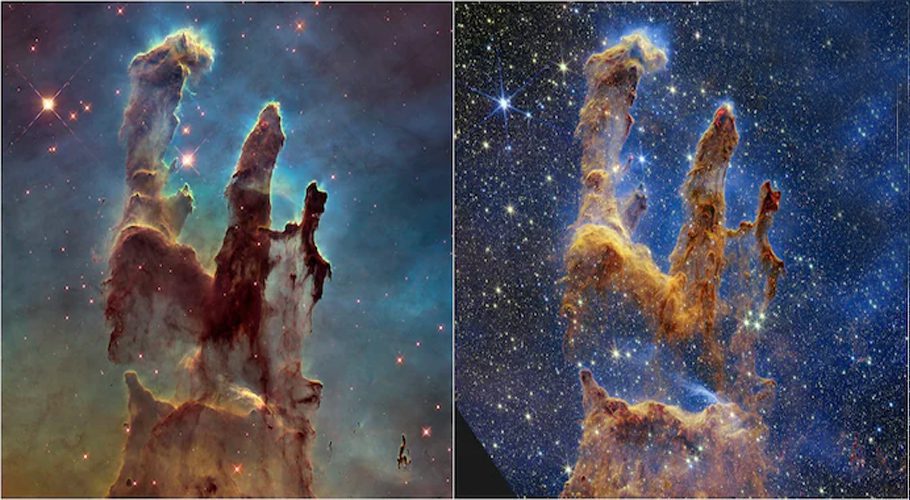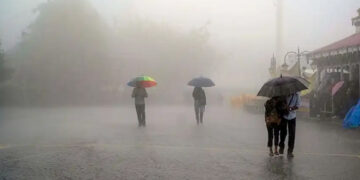NASA’s James Webb Space Telescope has captured a new view of an iconic cosmic site: the region known as the “Pillars of Creation,” where stars are born.
NASA’s Hubble Space Telescope first captured images of the Pillars in 1995, revealing its columns of gas and dust in the Eagle Nebula star nursery 6,500 light-years away. It became one of the most famous Hubble photos.


But thanks to Webb’s infrared capabilities, the newer telescope – launched into space less than a year ago – can peer through the opacity of the Pillars, revealing new stars forming.
The James Webb Telescope’s near-infrared camera captured the Pillars of Creation in a way they’ve never seen before.
Although the arches and spires look solid, they are actually ever-changing, semi-transparent clouds of gas and dust.
NASA hopes that studying the Pillars of Creation will give them a better understanding of how stars are formed.
The Webb images show bright red, lava-like spots at the ends of several Pillars. “These are ejections from stars that are still forming,” only a few hundred thousand years old, NASA said
This is what you’ve waited for.
Journey with us through Webb’s breathtaking view of the Pillars of Creation, where scores of newly formed stars glisten like dewdrops among floating, translucent columns of gas and dust: https://t.co/5ea1kCzU5x
Here’s your guided tour ⬇️ pic.twitter.com/jFiDDrMUPl
— NASA Hallo-Webb Telescope 🕸🕷🎃 (@NASAWebb) October 19, 2022
These “young stars periodically shoot out supersonic jets that collide with clouds of material, like these thick pillars,” it added.
“By popular demand, we had to do the Pillars of Creation,” Klaus Pontoppidan, science program manager at the Space Telescope Science Institute (STScI), said on Twitter.
STScI operates Webb from Baltimore, Maryland.
“There are just so many stars!” Pontoppidan added.
NASA astrophysicist Amber Straughn summed it up: “The universe is beautiful!” she wrote on Twitter.
The image, covering an area of about eight light years, was taken by Webb’s primary imager NIRCam, which captures near-infrared wavelengths – invisible to the human eye.
The colors of the image have been “translated” into visible light.
According to NASA, the new image “will help researchers revamp their models of star formation by identifying far more precise counts of newly formed stars, along with the quantities of gas and dust in the region.”
The $10 billion telescope, which was launched last Christmas day, is a joint effort with the European and Canadian space agencies.



































